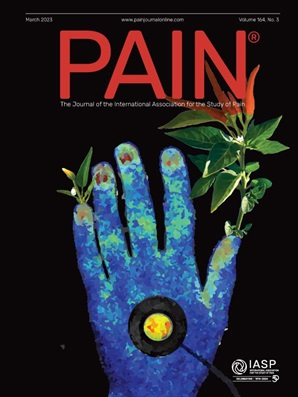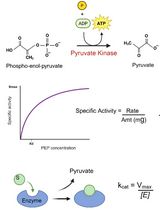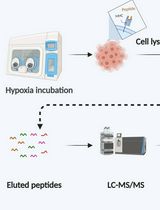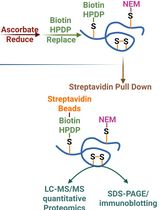- EN - English
- CN - 中文
A Simple, Reproducible Procedure for Chemiluminescent Western Blot Quantification
一种简单、可重复的化学发光蛋白质印迹定量方法
发布: 2023年05月05日第13卷第9期 DOI: 10.21769/BioProtoc.4667 浏览次数: 5193
评审: David PaulAnonymous reviewer(s)
Abstract
Western blotting is a universally used technique to identify specific proteins from a heterogeneous and complex mixture. However, there is no clear and common procedure to quantify the results obtained, resulting in variations due to the different software and protocols used in each laboratory. Here, we have developed a procedure based on the increase in chemiluminescent signal to obtain a representative value for each band to be quantified. Images were processed with ImageJ and subsequently compared using R software. The result is a linear regression model in which we use the slope of the signal increase within the combined linear range of detection to compare between samples. This approach allows to quantify and compare protein levels from different conditions in a simple and reproducible way.
Graphical overview

Background
Proteins are key biomolecules for the correct functioning of living animals; therefore, it is required not only to detect but also to accurately quantify them. Western blot is the most widely used and accepted method to detect proteins of interest using specific antibodies. Since the development of western blotting in 1979 (Towbin, H, PNAS 1979), more than 382,000 articles have been published using this technique (Western blot, PubMed, October 11, 2022). Since 2000, when 7,300 papers were published, there has been a constant increase in the number of articles reporting the use of this method (Moritz, 2020), reaching almost 22,600 in 2021. However, a proper quantification to determine the amount or the corresponding protein modification detected is still missing in most of the articles. In addition, reviewers and editors are eager to have trusty quantitative data regarding western blot analyses (Murphy and Lamb, 2013; Taylor et al., 2013;Janes, 2015; McDonough et al., 2015; Bass et al., 2017; Pillai-Kastoori et al., 2020). To assess accurate quantification, it is required to perform data normalization using proteins that do not vary due to experimental conditions. Usually, these are housekeeping proteins including actin, tubulin, and glyceraldehyde 3-phosphate dehydrogenase. Previous articles quantifying chemiluminescence western blots have relied on the use of single images of signals from different samples that are sometimes saturated, leading to incorrect outcomes. Fluorescence-based techniques using fluorophore-conjugated secondary antibodies are not commonly employed in most laboratories but provide a wider range of linear correlation between signal and protein abundance (Huang et al., 2019). Therefore, it is urgent to establish a simple, reliable method to quantify western blot signals to draw accurate conclusions in the studies.
Here, we describe an improved, simple protocol for western blot quantification taking advantage of chemiluminescent detection by ccd cameras and ImageJ and R software. Different images with different exposure times were utilized to generate the linear range for each protein to be quantified. The advantage of our procedure is that the signals are quantified across an interval of different exposures within the linear range for all the samples, where the differences between them are constant. Comparison of the slopes obtained provides a more accurate representation of the relative amounts of proteins in different samples than would be achieved by comparing individual images.
Materials and Reagents
The following list provides examples of the materials and equipment that we routinely use in our laboratory. Reagents and equipment with similar specifications will work as well.
All the materials and reagents listed were handled and stored following manufacturer’s instructions.
Polyvinylidene difluoride transfer membranes, 0.2 µm (PVDF membranes) (Thermo Fisher Scientific, catalog number: 88520)
Whatman 3MM CHR paper (Cytiva, catalog number: 3030-335)
β-glycerophosphate (AppliChem, catalog number: A2253, CAS number: 819-83-0)
β-mercaptoethanol (VWR BHD Chemicals, catalog number: 25351.182, CAS number: 60-24-2)
Acrylamide-bis solution (BioAcryl-P 30%, 37.5:1) (Alfa Aesar, catalog number: J61505)
Ammonium persulfate (APS) (Sigma-Aldrich, catalog number: A3678, CAS number: 7727-54-0)
Aprotinin (Sigma-Aldrich, catalog number: A1153, CAS Number: 9087-70-1)
BCA protein assay: reagent A (Thermo, catalog number: 23228) and reagent B (Thermo, catalog number: 23224)
Bis-Tris ultrapure (Thermo Fisher Scientific, catalog number: J12112.22, CAS number: 6976-37-0)
Bovine serum albumin (BSA) (Sigma-Aldrich, catalog number: A7906, CAS number: 9048-46-8)
Bromophenol blue (Amresco, catalog number: 0449-25G, CAS number: 115-39-9)
Dye reagent concentrate (Bio-Rad, catalog number: 500-0006)
Ethylenediaminetetraacetic acid (EDTA) (VWR Life Science, BHD Prolabo Chemicals, catalog number: 443885J, CAS number: 6381-92-6)
Glycerol (Thermo Fisher Scientific, catalog number: BP229-1, CAS number: 56-81-5)
Glycine (Sigma-Aldrich, catalog number: G8898-1KG, CAS number: 56-40-6)
HRP-conjugated anti-mouse antibody (Jackson ImmunoResearch, catalog number: 115-035-003, concentration used: 1:5,000)
HRP-conjugated anti-rabbit antibody (Jackson ImmunoResearch, catalog number: 111-035-003, concentration used: 1:5,000)
Hydrochloric acid (HCl) (Thermo Fisher Scientific, catalog number: H/1200/PB15, CAS number: 7647-01-0)
Isopropanol (Sigma-Aldrich, catalog number: 1.09634.1011, CAS number: 67-63-0)
Leupeptin (Sigma-Aldrich, catalog number: L9783, CAS number: 24125-16-4)
MES-SDS running buffer (Thermo Fisher Scientific, catalog number: NP0002)
Methanol (Fisher Chemical, catalog number: M/4000/PB17, CAS number: 67-56-1)
N,N,N',N'-tetramethyl-ethane-1,2-diamine (TEMED) (Thermo Fisher Scientific, catalog number: BP150-20, CAS number: 110-18-9)
Non-fat dry milk (Nestlé Sveltesse)
NP-40 (IGEPAL CA-630) (Sigma-Aldrich, catalog number: I3021, CAS number: 9002-93-1)
Phenylmethanesulfonyl fluoride (PMSF) (CalbioChem, catalog number: 52332, CAS number: 329-98-6)
Sodium azide (MERK, catalog number: 1066880100, CAS number: 26628-22-8)
Sodium chloride (NaCl) (Sigma-Aldrich, catalog number: 71383-5KG, CAS number: 7647-14-5)
Sodium dodecyl sulfate (SDS) (Bio-Rad, catalog number: 1610302, CAS number:151-21-3)
Sodium fluoride (NaF) (Sigma-Aldrich, catalog number: S7920-100G, CAS number: 7681-49-4)
Sodium orthovanadate (Sigma-Aldrich, catalog number: S6508, CAS number: 13721-39-6)
Trizma base (Tris) (Sigma-Aldrich, catalog number: T1503-1KG, CAS number: 77-86-1)
Tween-20 (Sigma-Aldrich, catalog number: P5927, CAS number: 9005-64-5)
WesternBrightTM ECL HRP Substrate (Advansta, catalog number: K-12045-D50)
Lysis buffer (see Recipes)
5× Laemmli buffer (see Recipes)
Polyacrylamide gels (see Recipes)
Transfer buffer (see Recipes)
TBST washing buffer (see Recipes)
Primary antibody blocking solution (see Recipes)
Secondary antibody blocking solution (see Recipes)
Equipment
Mini-PROTEAN® Tetra Vertical Electrophoresis Cell, 4-gel, for 1.0 mm thick handcast gels (Bio-Rad Laboratories Inc., catalog number: 1658001FC)
Mini-PROTEAN Tetra Companion Running Module (Bio-Rad Laboratories Inc., catalog number: 1658038)
Casting frame (Bio-Rad Laboratories Inc., catalog number: 1653304)
Casting stand gaskets (Bio-Rad Laboratories Inc., catalog number: 1653305)
Glass plates (Bio-Rad Laboratories Inc., catalog number: 1653311)
Short plates (Bio-Rad Laboratories Inc., catalog number: 1653308)
Combs, 15-well, 1.0 mm (Bio-Rad Laboratories Inc., catalog number: 1653360)
Buffer tank and lid with power cables (Bio-Rad Laboratories Inc., catalog number: 1658040)
Gel releasers (Bio-Rad Laboratories Inc., catalog number: 1653320)
Blot roller (Bio-Rad Laboratories Inc.)
Power supply (VWR, catalog number: HITAK622113)
MicroChemi System (Bio-Imaging Systems)
Software
ImageJ and R software
Procedure
文章信息
版权信息
© 2023 The Author(s); This is an open access article under the CC BY-NC license (https://creativecommons.org/licenses/by-nc/4.0/).
如何引用
CAÑADA GARCÍA, D. and Arévalo, J. C. (2023). A Simple, Reproducible Procedure for Chemiluminescent Western Blot Quantification. Bio-protocol 13(9): e4667. DOI: 10.21769/BioProtoc.4667.
分类
生物化学 > 蛋白质 > 定量
分子生物学 > 蛋白质 > 检测
您对这篇实验方法有问题吗?
在此处发布您的问题,我们将邀请本文作者来回答。同时,我们会将您的问题发布到Bio-protocol Exchange,以便寻求社区成员的帮助。
Share
Bluesky
X
Copy link













